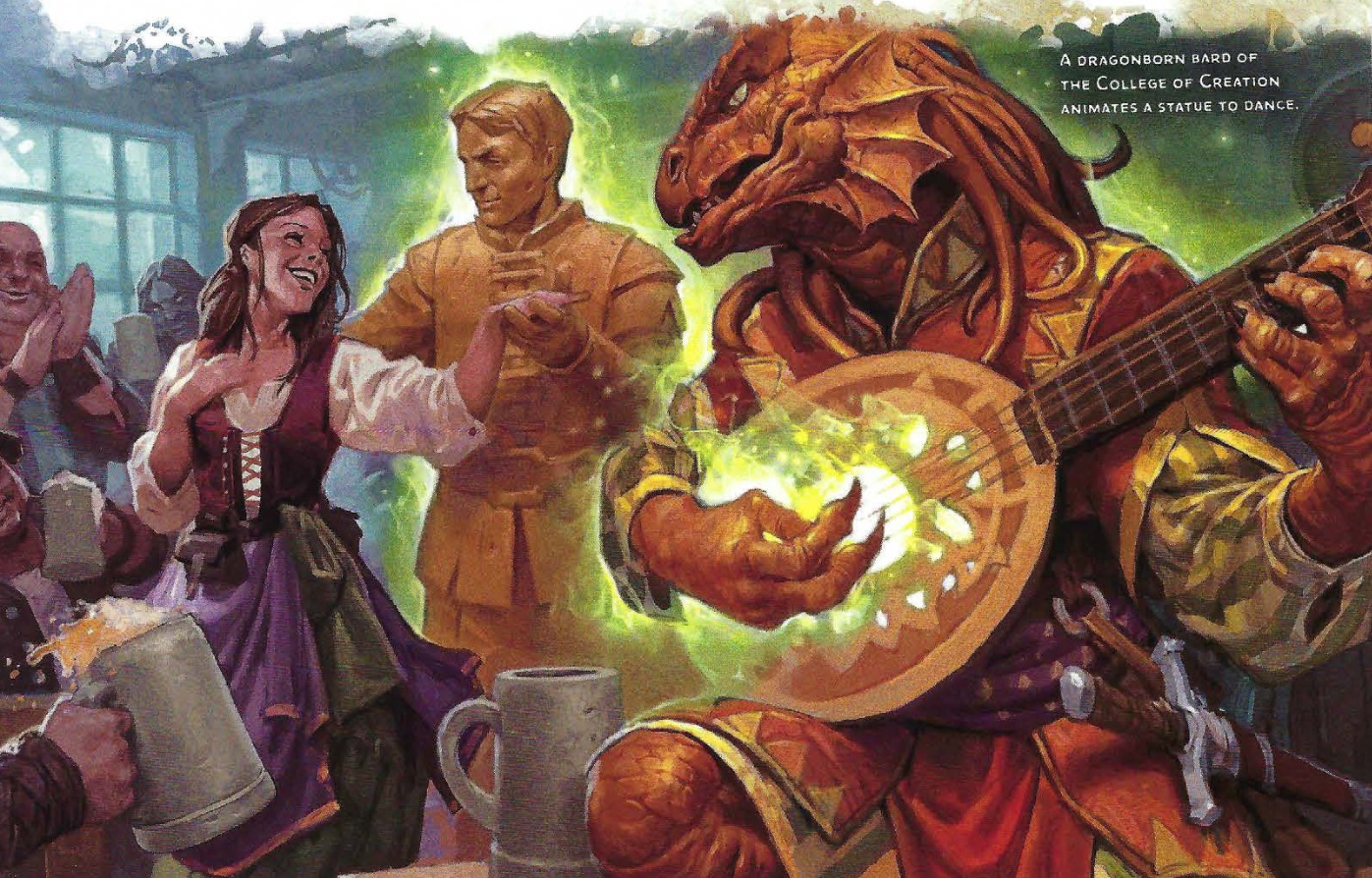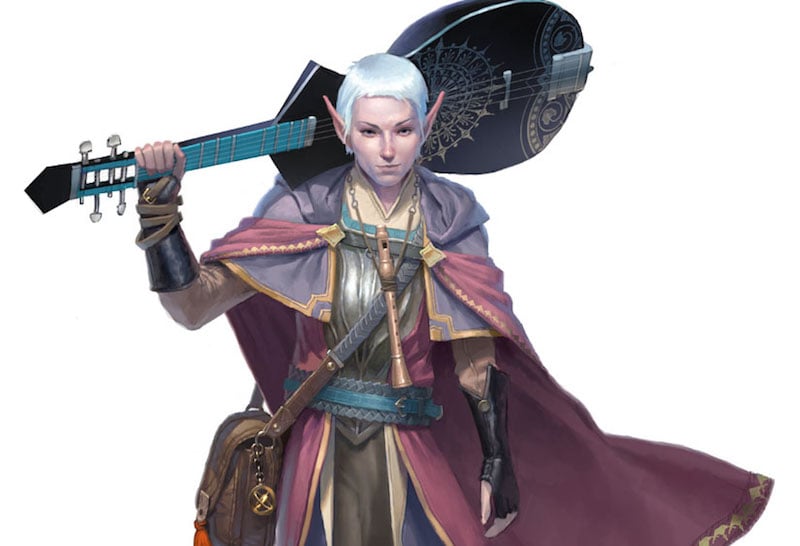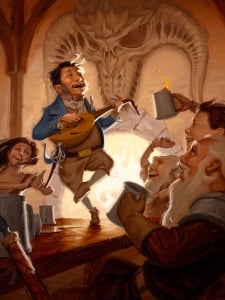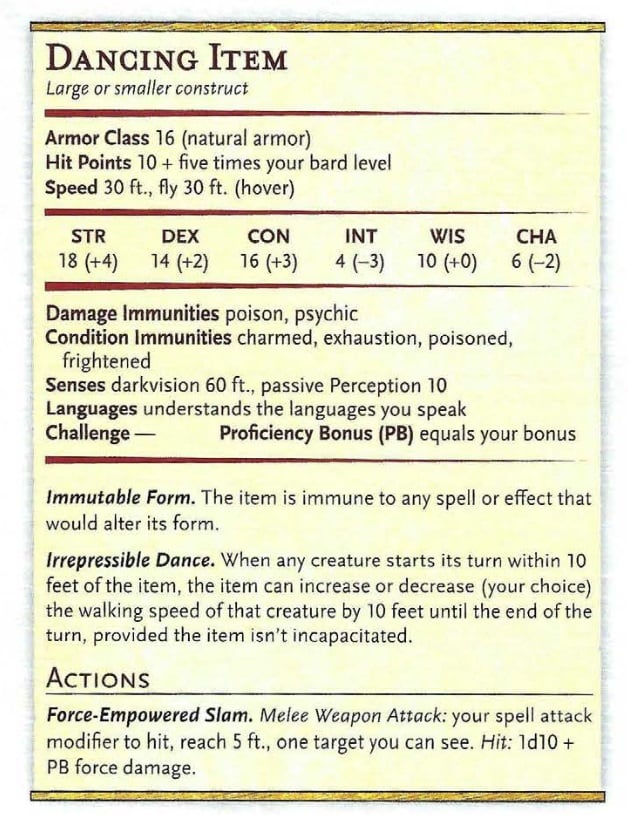D&D: Bards On The Rise Thanks To Tasha’s Cauldron
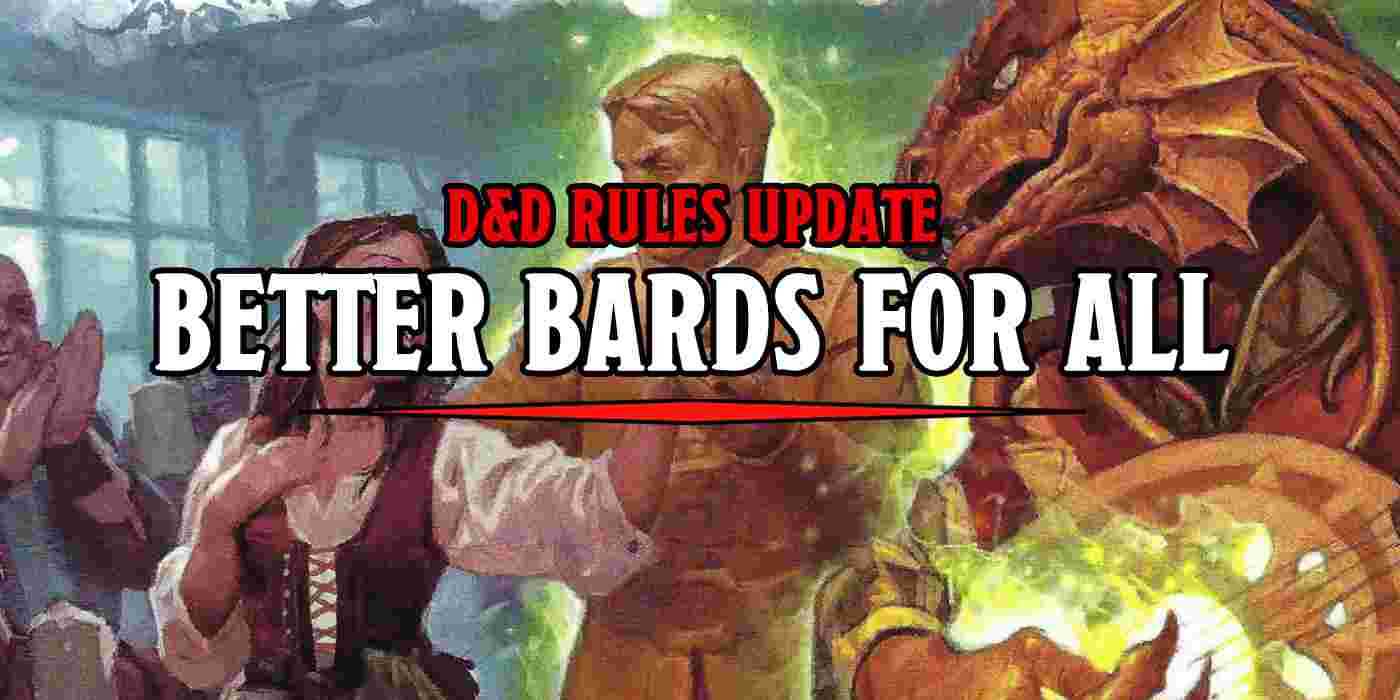
Every class has something to look forward to in Tasha’s Cauldron of Everything, but Bards are in the usual position of having a little more than others.
There is something about bards. They’ve always had to stand out in D&D, whether that’s because they’ve had to jump through so many hoops that even becoming one in the first place was a rarity, or because their basic essence: jack-of-all-trades, meant they could do just about anything. Seriously, in 3.x D&D and Pathfinder, you can build a bard that emulates pretty much any class in the game. And in some cases it does it better. There’s a reason that bards, as a D&D class, take their theme song right out of Annie Get Your Gun.
And in 5th Edition, bards have more of their own place than they have in previous editions. With Bardic Inspiration and a penchant for unlocking secrets or blending magic and spellcasting, they are strong enough on their own that you don’t have to spend three days reading through splatbooks to find the right combo of powers that makes your class actually work the way you want it to.
A big part of this comes from the flexibility of bards. They have cemented themselves in place as adventurers with flair and panache. And because Charisma is such a boon when you can rely on it and nothing else and still be okay, there’s a wide variety of stat spreads and playstyles that all feature “being good at talking to people” as a part of their build. It gives them a specific rock upon which to orient whatever else their facing may be.
Whether you’re a warrior-bard or a mage-bard, or a spy or a thief, there’s a bard in there somewhere. They are the all-purpose vegetable protein that can be built to substitute in for the meat of any class. In Tasha’s Cauldron of Everything, bards keep up their fine tradition. Optional class features grant them a great deal more customization–Magical Inspiration adds a healing boost to your Bardic Inspiration if you’re wanting to provide more healing to your party, allowing your Bardic Inspiration die to add to the healing of a spell.
Additional Bard Spells gives you more magic to add to your arsenal, including a number of spells that feel like they ought to have been on the bard list to begin with. Highlights include color spray, command, mirror image, slow, heroes’ feast, and prismatic spray. Finally, Bardic Versatility gives you even more customization, letting you swap in a different Expertise skill and a different Cantrip every time you either get an Ability Score Improvement or a Feat.
But, that’s only half the story. Bards also get one new subclass, the College of Creation.
Basically this college holds that the opening of the Silmarillion is true, and now you can tap into the Music of the Ainur. It’s all about the belief that the cosmos is a work of art, and that the creative work included harmonies that continue to resound through existence today. The bards of the College of Creation draw on that primeval song to do cool things.
Most notably, you can call upon a Mote of Potential, which is a floating, intangible mote that might take on the appearance of a musical note, a star, a flower, or another artistic symbol” that thrums with possibility. The Mote modifies your Bardic Inspiration, allowing you to give one of your friends an extra boost whenever you give them an inspiration die, granting a reroll of an ability check, extra damage on a successful attack, or temporary hit points on a saving throw.
Then there’s the Performance of Creation, which lets you create a nonmagical item for a few hours whenever you need something. It’s powered by 2nd level (or higher) spell slots, but you get one free one per day. At 6th level, you can create a Large object, and at 14th level it can be Huge.
If your campaign lasts long enough, you’ll get to enjoy the benefits of an Animating Performance which lets you use use an action to animate a Large or smaller nonmagical item within 30 feet of you, giving it a special stat block.
It’s another “pet” feature, but I really like this one. You can command it as a bonus action–but–you can also command it as part of the same bonus action that you use when you’re using bardic inspiration. Which carries the same benefits from Note of Potential. Here’s a look at its stats:
Giving it Force damage means it won’t feel useless or underpowered when going up against higher level creatures with resistances making this one of the better pets out there right now, and the idea of bringing to life something in the villain’s lair to fight against it is incredible. And as a capstone for about where most people stop playing, you’ll actually get to use it.
The 14th level feature is Creative Crescendo which allows you to create up to your Charisma Modifier nonmagical items when you create something with your Performance of Creation feature.
And that’s what’s new for Bards. What do you think? Is it everything you’d want in a Bard College? Let us know in the comments!

